Metal paint: characteristics and subtleties of choice

Our time is marked by the emergence of the latest materials on a synthetic basis, but this does not negate the widespread use of metal. Structures made of it are an integral part of apartment buildings, as for suburban construction - there is even more active use.
The popularity of the metal is due to its properties, such as price-quality ratio, strength, resistance to temperature extremes. However, this material also has its own "Achilles heel" - susceptibility to corrosion, as a result of which it must be covered with paint.
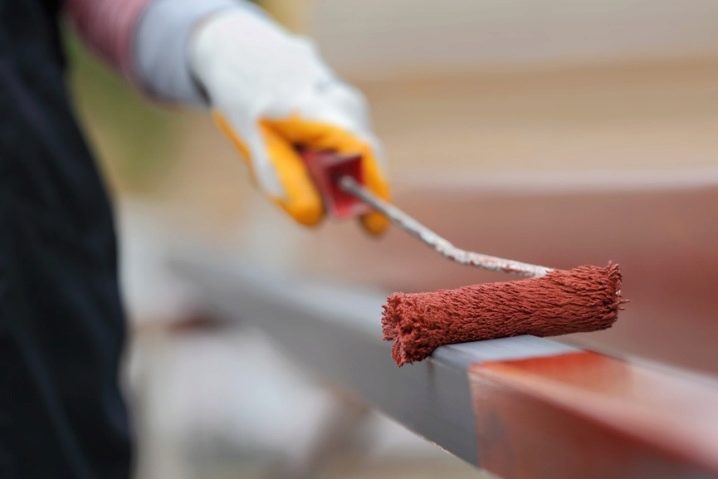
Surface features
When carrying out repair work, you need to remember that any iron structure needs protection with anti-corrosion agents. For this, a primer must be applied, creating an invisible layer on the coating, due to which moisture does not get to the surface.
The surface of metal structures can be either integral or contain traces of destruction. The assessment of the outer layer determines the choice of paint - for metal or for rust... In addition, the product can be made of black, non-ferrous, galvanized and any other type of metal. This is also of great importance when choosing a protective coating. For example, non-ferrous metals are painted with a special one-component enamel.
Its peculiarity is that after painting, the structure is protected from burnout, as well as from corrosion under the influence of precipitation.

In addition, the surface can vary in area: it can be large or small, it can be curly, such as a fence, or it can require a mirror finish, such as a car wing. Products can be placed both outdoors and indoors, which will also require different types of coatings and methods of their application.
The radiator of the central heating battery and the “bronze” handle on the front door require different types of paints and completely different methods of painting.
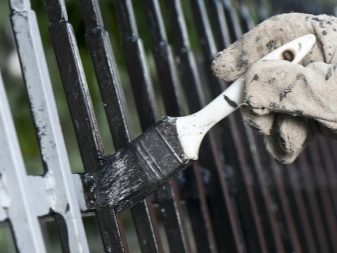

Types of paint: advantages and disadvantages
The main types of paints are:
- alkyd;
- acrylic;
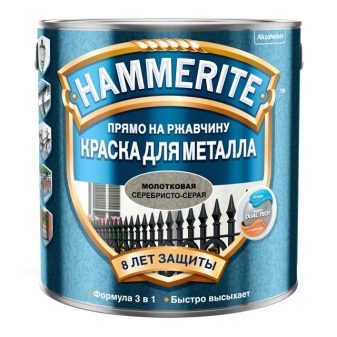
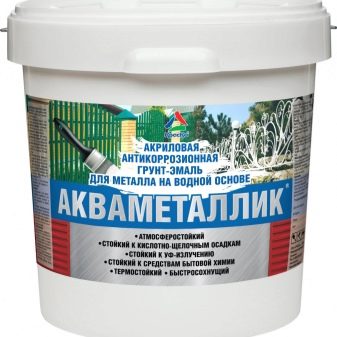
- epoxy;
- oil.
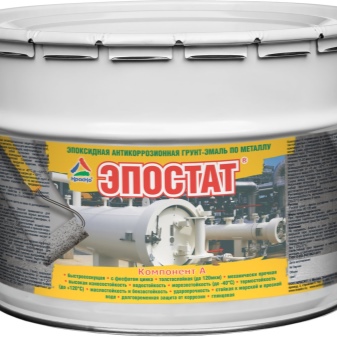
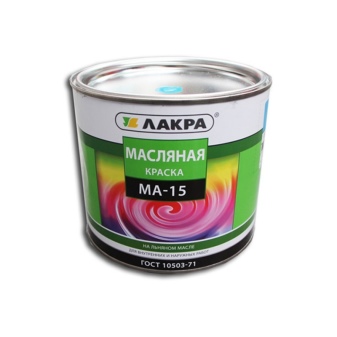
Epoxy enamel is extremely toxic due to its constituent components. Therefore, it is used very rarely.... It is designed to protect the metal from heating to high temperatures.
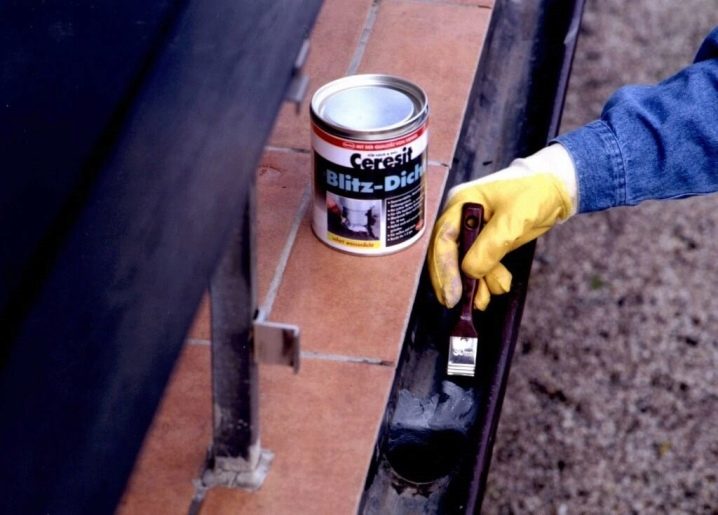
V oil paints the main components are natural oils and drying oil. They do not withstand temperature changes, because used mostly for interior decoration... Another disadvantage is that they do not protect the metal structure from corrosion.
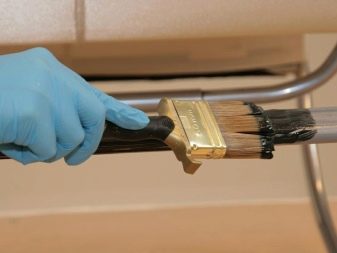
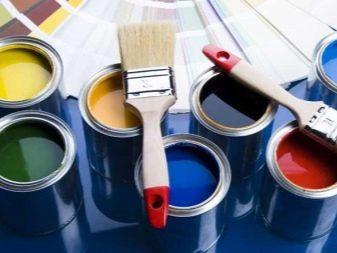
Alkyd species (enamel) is extremely flammable. However, this category of paints is fast drying and has good adhesion. Enamels are well suited for painting galvanized metal, and also prevent rusting of the structure.
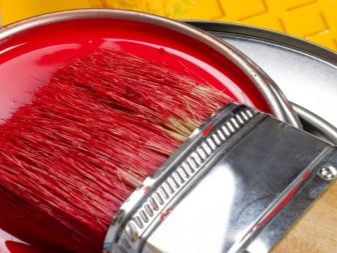
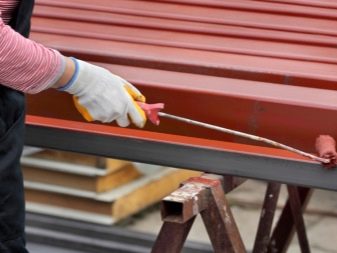
Acrylic withstands high temperatures, coatings of this type can be painted, for example, central heating batteries. It is wear-resistant, does not crack and fade, and provides corrosion protection. Does not lose gloss, does not turn yellow or oxidize.
Also, acrylic paints are environmentally friendly, washed off hands and tools with water before they dry. After drying, acrylic becomes waterproof... It is not surprising that this type of dyes is gaining more and more popularity in the market, despite its high price compared to other types.
Of the minuses, in addition to the high cost, it should also be noted the need for thorough surface preparation before painting.

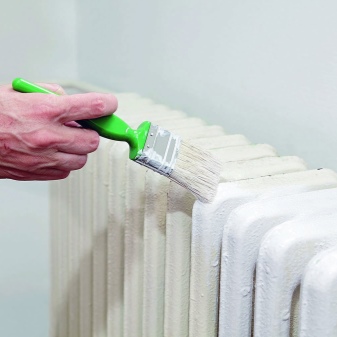
Great for metal structures water paint... It has good adhesion and elasticity, it is not flammable, does not emit harmful substances... It can be used in industrial facilities.

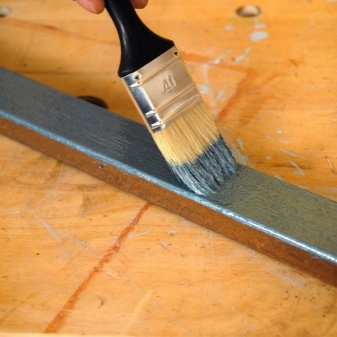
Zinc mineral paints provide the best corrosion protection - up to 25 years. Polyurethane paint is also good for this purpose. For example, a two-component primer enamel is a symbiosis of properties such as wear resistance and rust prevention.
In addition, it is frost-resistant, impervious to the effects of sea and fresh water, with a glossy sheen. There are also semi-gloss polyurethane paints.
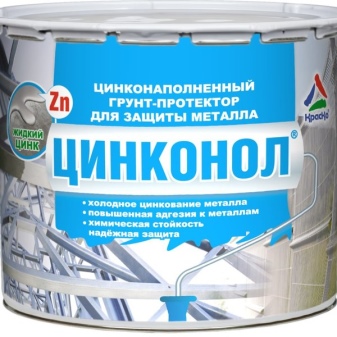

If you need mirror paint under chrome, it also exists. There are two types, but only two-component are suitable for painting a metal structure.
The application process is a little more complicated, as it requires careful preparation of the surface before painting and the creation of a protective layer of varnish after, but the result is indistinguishable from real chrome. To work with such paints, a spray gun is used., paint rollers and brushes are not suitable.
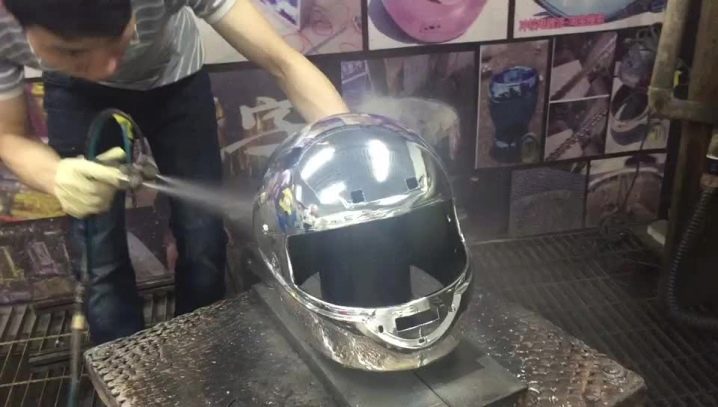
Suitable for applying inscriptions on metallized surfaces of any degree of pollution or wear metal marker... It uses safe highly pigmented ink, it is water- and heat-resistant, opaque, does not fade for a long time, and is convenient to use.
Nitro paint (nitroenamel, nitrocellulose) - another type of coating, which is obtained by treating cellulose with nitric acid. It is sold ready-to-use, does not need dilution. It has an ultra-fast drying speed, so it is most often applied by spraying. Inexpensive. Very attractive coverage, resulting from staining - another plus in the piggy bank of nitroenamel. But it must be borne in mind that a beautiful coating is obtained only with a long and careful surface preparation before painting.
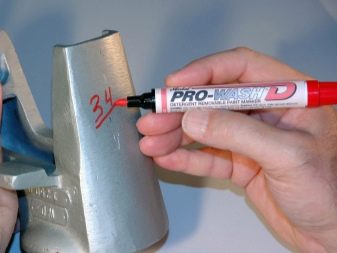
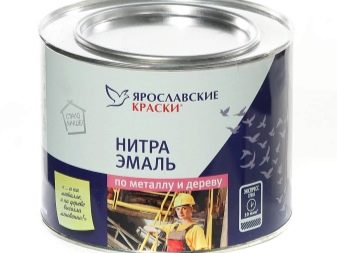
Other cons:
- flammability;
- high toxicity;
- volatility;
- the requirement to work only in a dry room (in a damp building, whitish smudges may form on the surface of structures);
- fragility - may fly off the coating upon impact.
In addition, nitrocellulose is incompatible with other types of paints: it cannot be applied over any coatings, only on its own.
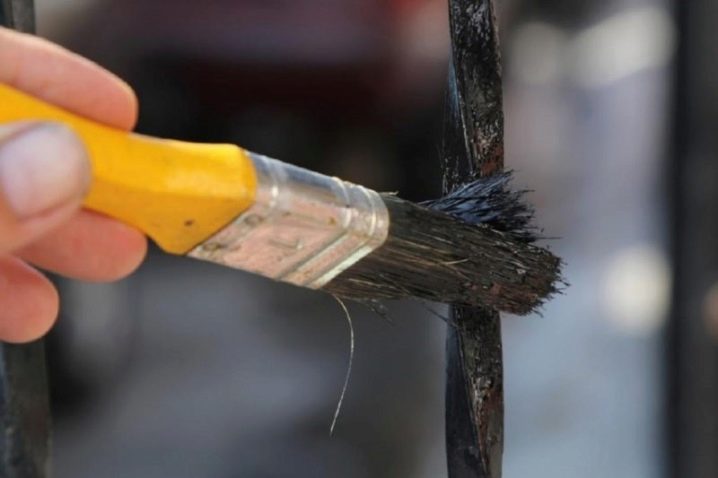
Colors
Modern industry allows you to paint metal surfaces in almost any color desired by the owner. Basically, of course, these are simple colors: blue, red, white. What if you need a complex shade?
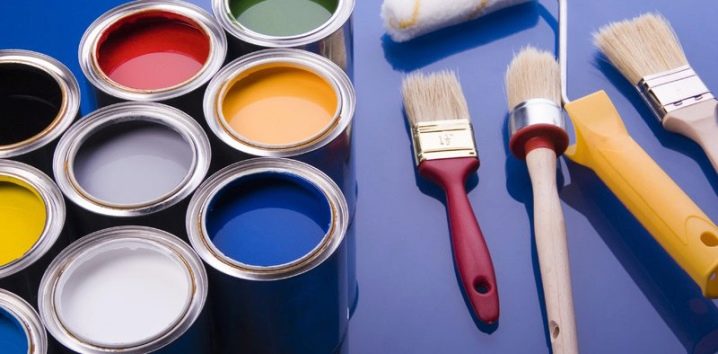
You can get it yourself or with the help of professionals. There are three options:
- tinting;
- mixing different colors of the same type of paint;
- adding a special powder.
Tinting is the addition of a dye of the desired color to the base white composition - a color scheme. If the shade is very complex, it is possible to add several colors. Water-based formulations are best suited for tinting - silicone, acrylic.
There are two ways - computer tinting and manual tinting. Both are tricky. In the first case, the selection of the composition is performed by a computer, this is convenient for cases when it is necessary to repeat the tinting (there was not enough mixed coating, for example).
However, the accuracy of this option can be lame, and the pleasure is not cheap. As for manual tinting, you can achieve almost any shade here, but there is a risk of not being able to repeat it exactly the second time, if necessary.
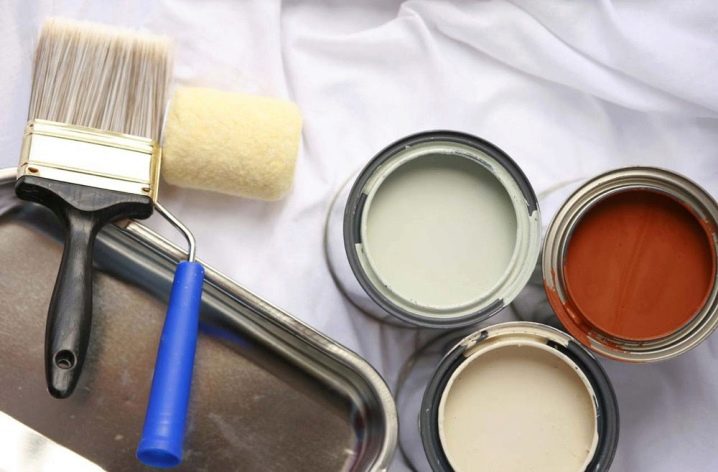
When mixing several colors, the principle of operation is the same, only the basis is not white, but a different color. For example, for getting orange mix red and yellow.
It is possible to achieve more complex color solutions. The method is suitable for coatings for which tinting is not suitable.
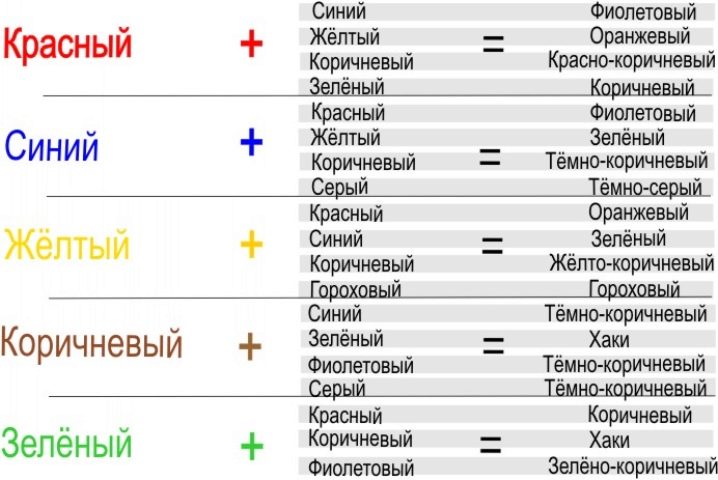
As for the powder method, it is best suited when you need to create an imitation of metal - silver, bronze. For example, using copper powder, you can get a copper-like paint. The more powder is in the base paint, the more plausible the effect of the valuable metal is in the end. The optimal ratio is 20% to 80%.
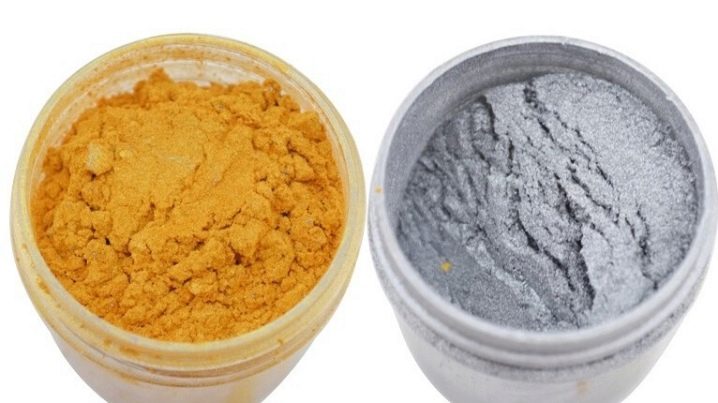
For example, chrome-plated paints with a mirror finish will put any metal part in gold or silver, give the surface any shade - copper, bronze, iridescent. By the way, these dyes are quite affordable.
Black and gray colors are suitable for non-residential premises for household purposes, and for living space it is better to choose brighter colors: green, blue, red, orange.
If a hammer-like paint is chosen, the color range is modest. It consists of standard black, white, and several other simple colors. But they can paint the product in golden, copper or bronze. The advantage is that these paints are sold ready-to-use. They do not need to be mixed and dissolved like powdered ones, but just open the lid and mix thoroughly.

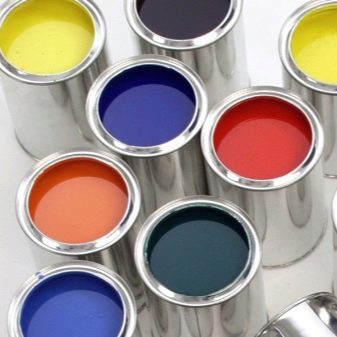
Each manufacturer of paints for metal has its own color palette, some have a very wide range, some have only basic colors. The consumer has the opportunity to choose a product to his taste and wallet.
How to choose?
What paint for metal a consumer should choose depends on a number of factors. If the structure is planned to be exposed to high temperatures, then oil and alkyd types are suitable, they can withstand heating up to 80 degrees Celsius. Acrylic paint, some types of epoxy and alkyd paints that easily tolerate 120 degrees are suitable for painting central heating batteries.
The most heat-resistant are:
- polyurethane paints - up to 150 degrees;
- epoxy-bituminous - up to 400 degrees;
- paints based on silicone resins - up to 600 degrees, such are suitable, for example, for painting the oven.
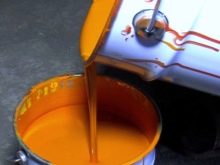
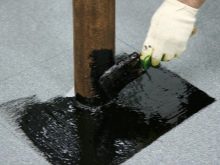
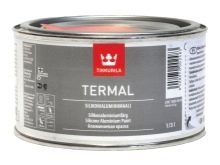
If important, so that the paint is not toxic, oil or acrylic is the best choice... Acrylic paint is in many cases the preferred paint as it is durable and non-flammable. It can be used not only in the production of interior finishing works, but also for painting metal tiles and other iron elements of the roof, if the original paint has burned out or signs of corrosion appear.
Alkyd paints are toxic, but their popularity is based on their high adhesive properties. If the structure needs protection against corrosion, then primer-enamels are suitable., they are not inferior in quality to conventional compounds in the work on rust. Polyurethane compounds are suitable for use at subzero temperatures.
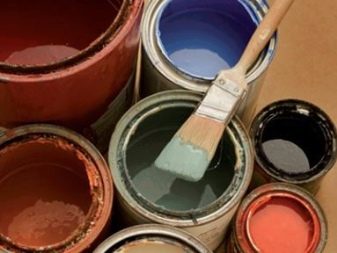
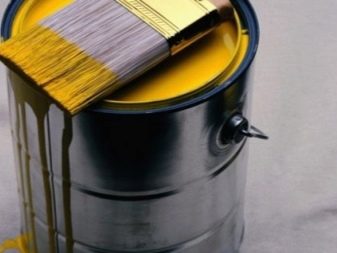
A hammer effect coating is suitable for painting entrance doors. And to paint a metal fence, they traditionally use alkyd, oil, polyvinyl chloride paint, as well as enamel based on chlorinated rubber.
Reflective paint (also known as reflective paint) is suitable for painting parts of the product that should be visible in the dark. It can be acrylic, polyurethane, alkyd based.
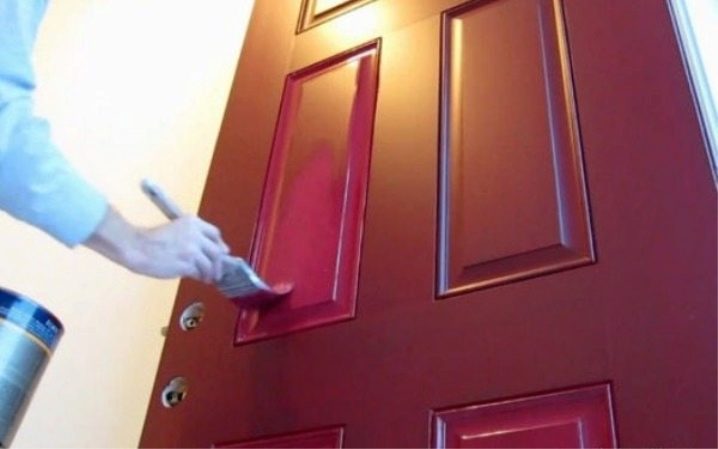
If the fence is galvanized or aluminum, then the only option is dispersion acrylic paints. According to consumers, the most popular paint in this segment is Cycrol. Packaging is carried out in aerosol spray cans, buckets, cans.
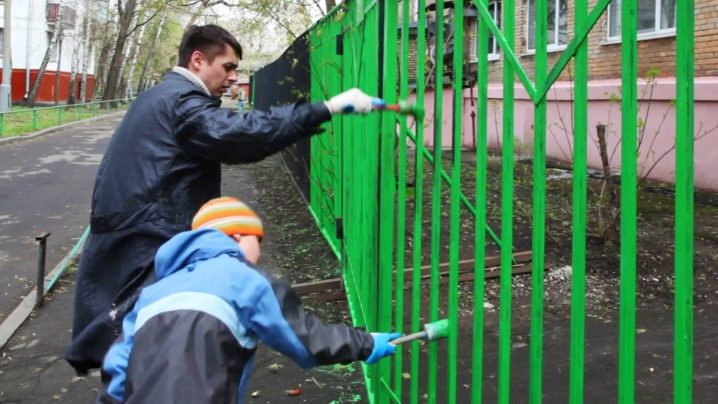
If it is necessary to paint and at the same time insulate metal pipes or pipelines, thin liquid ceramic thermal insulation for metal is suitable.
It is one-component, water-based, protects steel structures from corrosion, and can be applied to scale or rust.

For decorating metal products, they are best suited acrylic paints, they can be used even by allergy sufferers... These types of coatings should always be marked "decorative". They come in a variety of shades, but gold and silver are best for decorating metal.
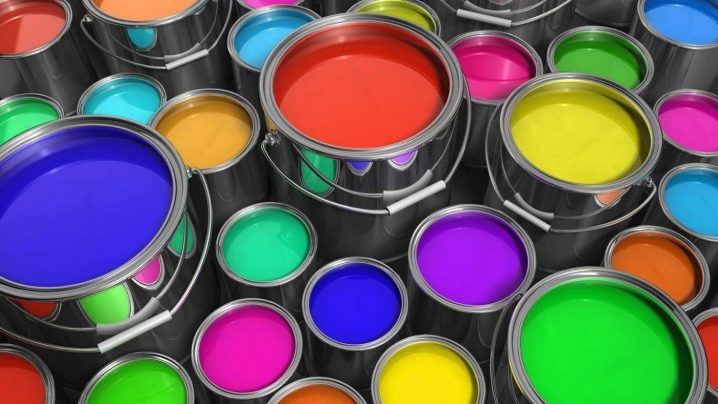
When buying materials from a domestic manufacturer, it is better to choose those that are made in accordance with GOST. Then you can count on better quality, higher performance properties.
For interior work
In these cases, oil and acrylic types are used. They are non-toxic, dry quickly, retain their color if there is no constant external influences on the painted surface. Nitro enamel is also often used, because it is incompatible with a humid environment.
Toxic paints such as acrylic or epoxy are best avoided for interior decoration, despite their durability and better adhesion to the surface.
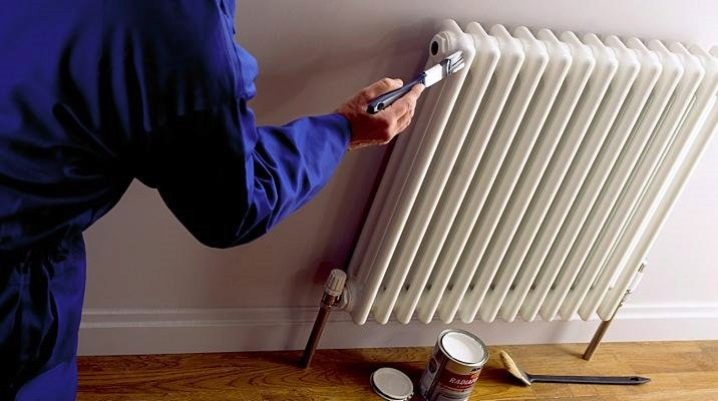
The choice of a specific type of coating is made taking into account the characteristics of the product requiring painting, as well as the impact of factors that the painted surface will be exposed to during the period of operation: high temperatures, humidity, direct sunlight, etc.
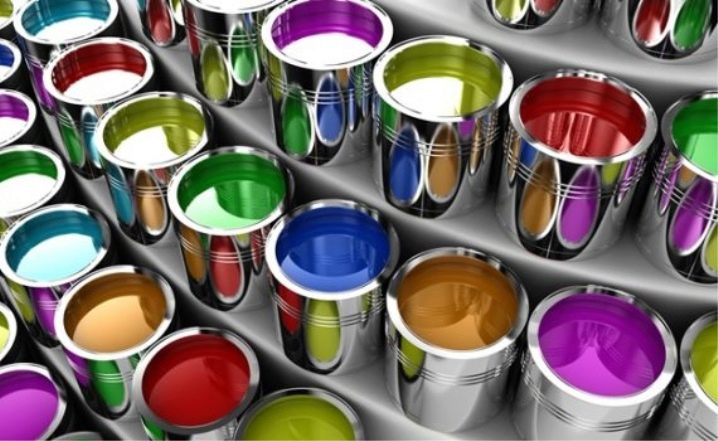
For outdoor decoration
For the production of outdoor work, it makes sense to buy paint marked "weatherproof", since its composition is designed specifically for the street, taking into account all types of environmental influences. This type of coating contains high molecular weight silicones.
In order to paint a galvanized surface, not every dye is suitable. There is a separate group of materials for it. They can be in the form of a powder, which must be diluted, or in the form of a ready-made mixture.
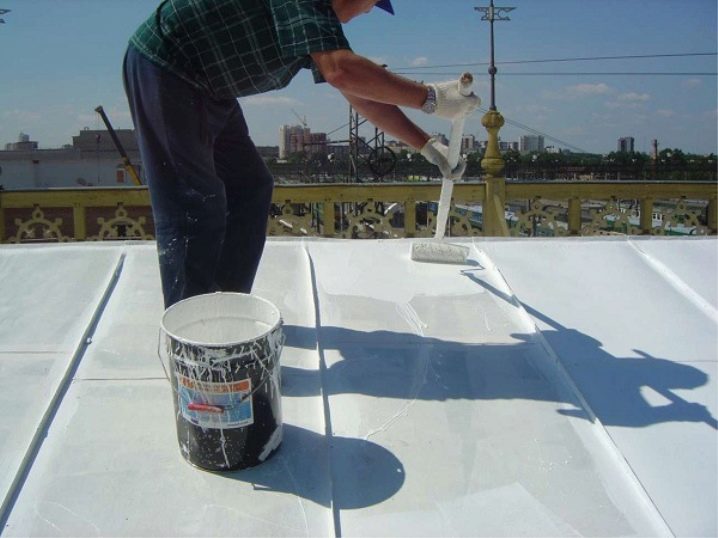
To prepare the metal structure for exterior decoration, its surface is cleaned of plaque, dust, dirt, as well as rust, if painting is not done with paint on rust. If necessary, the surface is also degreased.
Best suited for outdoor use dyes with a hammer effect. Their quality indicators are the highest... True, due to the high consumption and high price, it is better to choose them when you need to paint a small surface. You also need to know that this type of dye requires the application of a primer of the same brand. If the consumer is not limited in costs, this coating is suitable for painting any surface in the air.
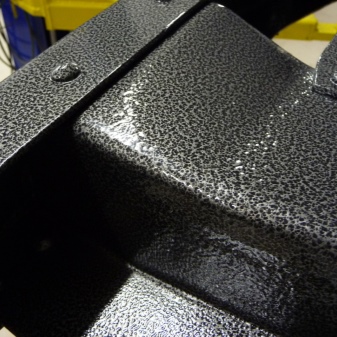
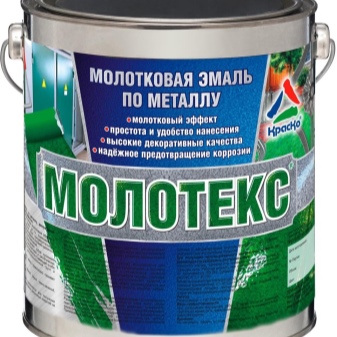
Famous manufacturers and reviews
The leading manufacturer of decorative paints in Finland, Sweden and Russia is the company Tikkurila... The company has been operating on the Russian market for more than 10 years, so it is heard even by people who are far from repair work. The products manufactured under its brand are invariably popular with the consumer, as they are of high quality and are presented in all price segments: economy, medium and premium.
Tikkurila coating is wear-resistant, unaffected by lubricating oils and all kinds of fats... The company produces types of paints for interior and exterior decoration. Heat resistant paints are also available. Reviews for the products of this company are overwhelmingly positive. The variety of goods and the ability to choose according to your taste and wallet only contributes to this.
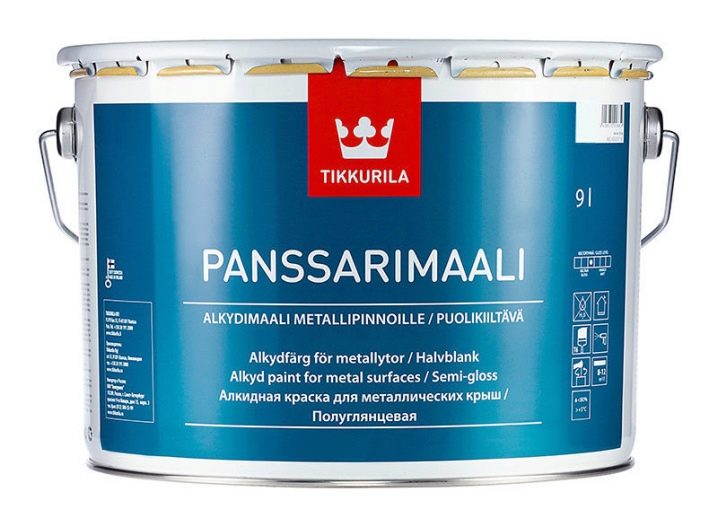
"Novbytkhim" - a domestic manufacturer. The company produces 3-in-1 primer-enamel, which is not only a decorative but also a protective coating. Suitable for interior and exterior decoration, for glossy and matte finishes. The plus is that it the coating is resistant to temperature fluctuations and environmental influences: It can be applied at temperatures up to -10 degrees Celsius. Customer reviews for Novbythim's products are mostly good.Both the ratio "price-quality" and the low price, availability of goods in principle are noted.
Another brand - Hammerite (produced by Akzo Nobel) - the founder of the production of anti-corrosion paints, as well as the technology of painting directly on rust. The coating has a scaly structure, and this is an additional barrier on the path of moisture and air to the metal surface. Coatings are highly adhesive, even when applied over corrosion... Permanent appearance - at least up to 5 years. Also, these paints are distinguished by an interesting and unusual texture. Consumer reviews for the coatings of this brand are mostly positive, the only drawback is the high cost of Hammerite products.
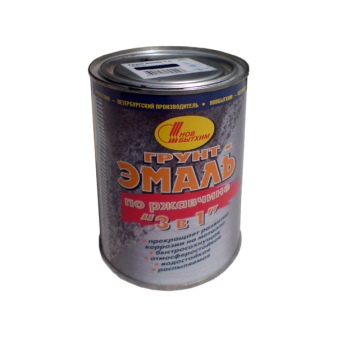
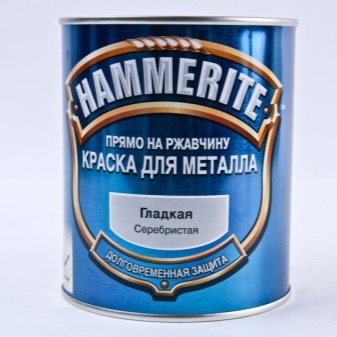
Of course, there is still a very large number of products from various manufacturers on the market, you just need to choose.
Useful Tips
- It is necessary to store the paint at temperatures from -15 to +25 degrees Celsius. Most coatings must be warmed to room temperature before being applied. The shelf life without loss of quality is no more than 6 months. Then it should be thrown away.
- It is only necessary to paint the heating system when the equipment is turned off. It is best when the heating season is over, that is, during the summer period. In this case, a dye is used that can withstand temperatures up to 150 degrees Celsius.
- For painting non-ferrous metals, only a special type of primer is used.
- In order to paint the oven, you need to use paint that can withstand temperatures over 500 degrees Celsius.
- For exterior painting of metal structures, organic solvents must be used.
- If in the area to be painted there are corroded portions that move away from the surface, they must be removed before painting begins.
- Before starting work, it is worth checking the temperature characteristics of the paint for compliance with their heat resistance of the object.
- If a metal structure is coated during a period of low temperatures, it is better to take a quick-drying winter paint, for example, Bystromet. Compounds of this type can be applied at temperatures up to - 20 degrees Celsius.
- It is forbidden to apply metal coating on surfaces that come into contact with drinking water.
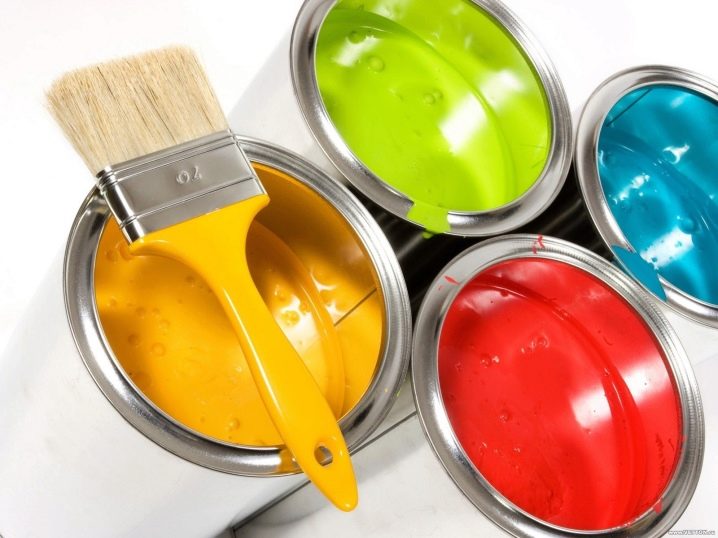
You will learn how to choose a paint for metal from the video below.













The comment was sent successfully.